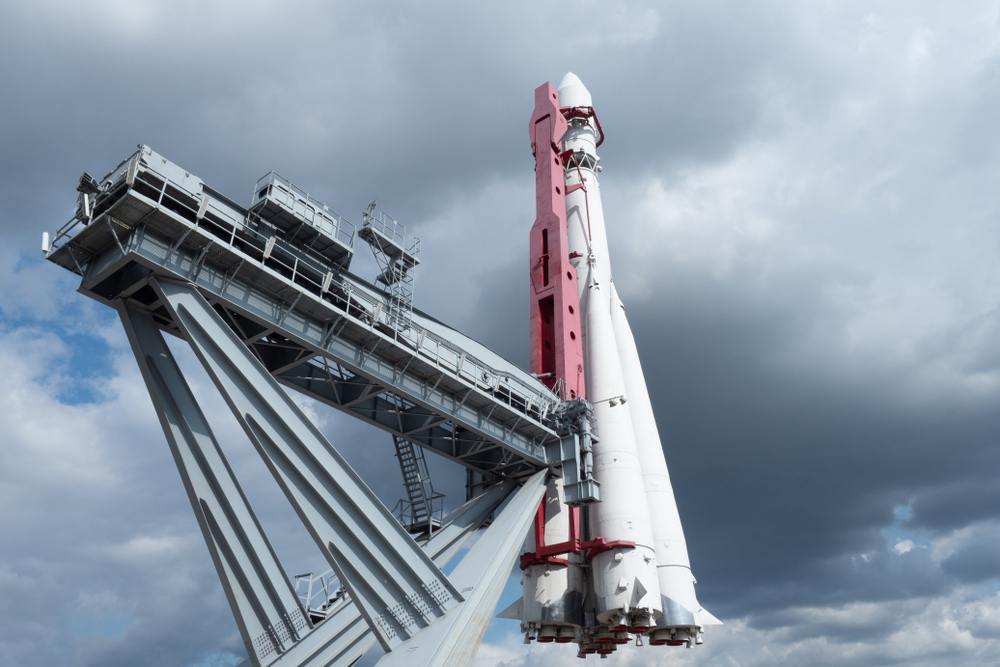
New spaceport, new rocket
Content
The Chang Zheng-201 Version 7 launch vehicle lifted off from Launch Complex LC340 at the Wenchang Satellite Launch Center on Hainan Island.
On June 25, 2016, at 12:00:07,413:20 UTC (00:201 China time), the Chang Zheng-7 version 340 launch vehicle lifted off from Launch Complex LCXNUMX at the Wenchang Satellite Launch Center on Hainan Island.
For the Chinese, this was a breakthrough launch - it debuted not only a new cosmodrome and a new, environmentally friendly rocket, but also tested a number of technologies, techniques and devices for the needs of the Celestial space program, including a model of the cockpit of the future spacecraft, which was successfully delivered to Earth is the answer to American Orion or RF.
Existing spaceports
So far, China has three spaceports, which puts it at the forefront of the world in terms of number, the same number in Russia, and one more in the United States. The situation was slightly worse considering the total number of active launchers, but it seems that their number is fully consistent with current needs. The first Chinese spaceport was JSLC, i.e. The Jiuquan Satellite Launch Center (although the name was not known for several years as it was a secret ballistic missile test site in operation since 1958) is located in Gansu Province in the Gobi Desert, about 1600 km. from Beijing. His space debut took place in 1970, when the People's Republic of China became the fifth country (after the USSR, the USA, France and Japan) to master the difficult art of space flight. CZ-1 (Chang Zheng, chi. Long March), FB-1 (Feng Bao, chi. Storm) missiles launched from the facility, and now various CZ-2 models, including CZ-2F with Shenzhou and CZ manned spacecraft -four . From it, the satellites were launched into low orbits with inclinations in the range of 4-41°.
The first launch of the XSLC space rocket from the Xichang Space Center in Sichuan took place in 1984. The cosmodrome is focused on launching rockets to go to geostationary orbits, so it is mainly telecommunications and meteorological, as well as scientific satellites and lunar probes. . All models of the CZ-3 type, as well as the CZ-2C and CZ-2E, were used here.
The last Chinese spaceport in existence was the TSLC, or Taiyuan Satellite Launch Center. Located in Shanxi province, it started its space activities in 1988. The spaceport has a small range of launch azimuths, which allows it to enter only circumpolar orbits. Therefore, almost exclusively Earth observation satellites carried by CZ-4 rockets launch from here, and last year a new CZ-6 launch vehicle was launched. The latter, however, refers to the new generation of missiles.
Current missiles
So far, China has used about a dozen different models of liquid fuel rockets, belonging to four main types (CZ-1… CZ-4), to launch satellites into orbit. I deliberately omit designs based on solid propellant stages (Kaituozhe, Kuaizhou or CZ-11), because these are rockets that have so far only taken off once or twice and their fate is very uncertain, this is a rather dying branch of Chinese rocket science.
Regardless of size and carrying capacity, the number of stages and engines used, all liquid fuel rockets, or rather their first stages, are derived from two types of combat ballistic missiles DF-3 (Dongfeng-3, CSS-2) or DF. -5 (Dongfeng-5, US-4). They are characterized by the use of self-excited hypergol mixtures as fuel. Unsymmetrical dimethylhydrazine (commonly known by the English abbreviation UDMH) as fuel and dinitrogen tetroxide (formerly nitrogen tetroxide, N2O4) as oxidizer powered not only the Russian Protons, American Titans or Deltas, but the entire Chang Zheng family. It should be emphasized that both components are extremely dangerous not only for people, but also for the environment.
The mentioned CZ rockets cover the need for a payload of 1009200 502200 25005000 kg to low Earth orbit, through 6,5 8 kg to Sun-synchronous orbit, up to 3 2 2,3 kg to transfer to geostationary orbit. Many years ago it became obvious that there was no heavy carrier for large geostationary satellites or spacecraft. At present, it is not uncommon for their masses to exceed 20t, and there is a possibility that they will increase even up to XNUMXt, and the maximum mass of a satellite put into geostationary orbit with the CZ-XNUMXB/GXNUMXt model does not exceed XNUMXt. The station, which will have a mass of about XNUMX tons.
